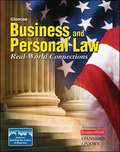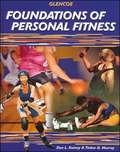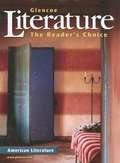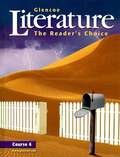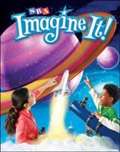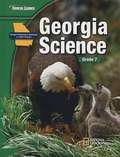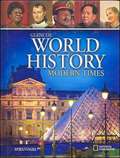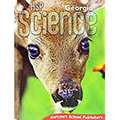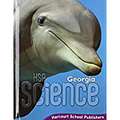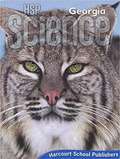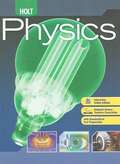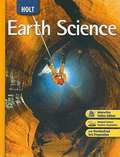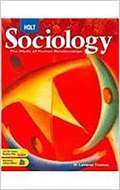- Table View
- List View
More NIMAC books are available at www.nimac.us. If you find your title in the NIMAC and not in Bookshare then please contact us to request it.
Georgia Science: A Closer Look [Grade 4]
by Dinah Zike Jay K. Hackett Richard H. Moyer Joanne Vasquez Mulugheta Teferi Kathryn Leroy Dorothy J. T. Terman Gerald F. WheelerNIMAC-sourced textbook
Georgia Science [Grade 8]
by Margaret K. Zorn Eric Werwa Thomas Mccarthy Deborah Lillie Patricia Horton Cathy Ezrailson Nicholas Hainen Dinah ZikeTextbook.
Glencoe, Business and Personal Law, Real-World Connections
by BusinessWeek Paul A. Sukys Gordon W. Brown Standard Poor'SNIMAC-sourced textbook
Glencoe Foundations of Personal Fitness: Any Body Can...Be Fit!
by Don L. Rainey Tinker D. MurrayNIMAC-sourced textbook
Glencoe Literature: The Reader's Choice, American Literature
by Beverly Ann Chin Jacqueline Jones Royster Jeffrey D. Wilhelm Douglas FisherTextbook.
Glencoe Literature: Reading with Purpose, Course 4
by Beverly Ann Chin Jacqueline Jones Royster Jeffrey D. Wilhelm Douglas FisherNIMAC-sourced textbook
SRA Imagine It! Level 3, Book 2, Themes: Earth, Moon, and Sun; Communities Across Time; Storytelling
by Carl Bereiter Y Biemiller Joe CampioneNIMAC-sourced textbook
Glencoe Science: Georgia Science [Grade 7]
by Dinah Zike Peter Rillero Edward Ortleb Lucy Daniel Alton BiggsTextbook.
Career Planning
by Spencer G. Niles Thomas F. Harrington Garbette A. M. GarrawayNIMAC-sourced textbook
Grade 5 Science Resources
by Lawrence Hall of Science University of California at BerkeleyNIMAC-sourced textbook
HSP Georgia Science [Grade 1]
by Michael Bellomo Michael Dispezio Marjorie Frank Gerald Krockover Joyce Mcleod Carol Valenta Barry Van Deman Barbara Ten BrinkNIMAC-sourced textbook
HSP Georgia Science [Grade 2]
by Michael Bellomo Michael Dispezio Marjorie Frank Gerald Krockover Joyce Mcleod Carol Valenta Barry Van DemanTextbook.
HSP Georgia Science [Grade 3]
by Barbara Ten Brink Barry Van Deman Carol Valenta Joyce Mcleod Gerald Krockover Marjorie Frank Michael Dispezio Michael BellomoTextbook.
Holt American Anthem: Reconstruction to the Present
by Edward L. Ayers Robert D. Schulzinger Jesús F. de la Teja Deborah Gray WhiteNIMAC-sourced textbook
Holt Sociology: The Study of Human Relationships
by W. Laverne ThomasMuch of the writing in this textbook is summarizing. The sociological data in this textbook has been collected from many sources. Summarizing all the characteristics of a society or even a social institution involves studying a large body of demographic, cultural, economic, geological, and historical information. Finding the Main Idea is the ability to identify the main point in a set of information. This textbook is designed to help you focus on the main ideas in sociology. The Read to Discover questions in each chapter help you identify the main ideas in each section. Identifying points of view helps us examine why people see things as they do. It also reinforces the realization that people's views may change over time or with a change in circumstances. Analyzing Information is the process of breaking something down into parts and examining the relationships between those parts. Comparing and Contrasting involve examining events, points of view, situations, or styles to identify their similarities and differences. Comparing focuses on both the similarities and the differences. Contrasting focuses only on the differences. Studying similarities and differences between people and things can give you clues about social theories, human interaction, and societies.
Houghton Mifflin: My World Poster Book [Kindergarten]
by Ludwig Achim von ArnimNIMAC-sourced textbook

